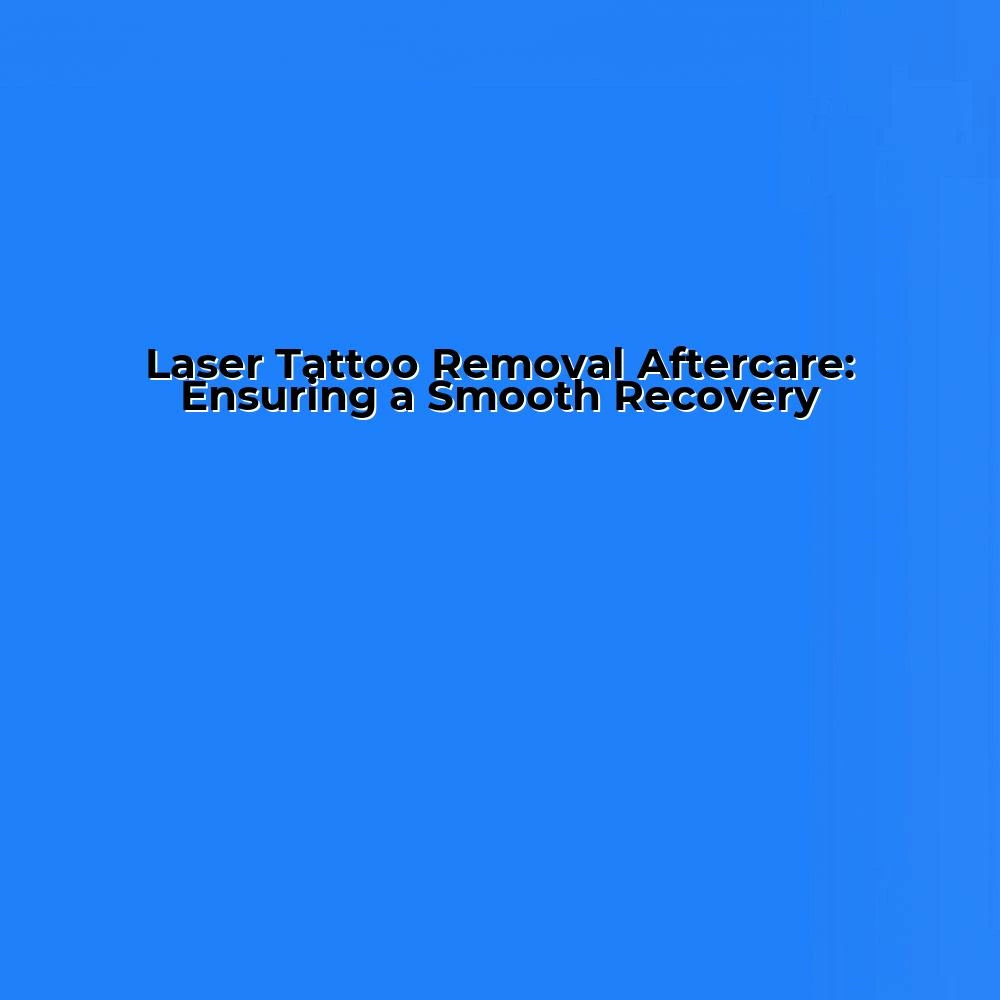Laser Tattoo Removal Aftercare
| Visit:77

Laser Tattoo Removal Aftercare
The field of aesthetic medicine and dermatology has made remarkable advancements in recent decades. One such progress is the advent of laser tattoo removal. In comparison to traditional methods, laser tattoo removal after-treatment requires less invasive procedures and hence has considerably reduced recovery time. However, meticulous aftercare is non-negotiable to ensure a smooth and complete recovery.
As physicians familiar with laser tattoo removal can attest, it is merely half the journey. The procedure's success primarily depends on the quality of aftercare administered by both the healthcare provider and the patient. Post-procedure aftercare plays a vital role in maximizing the procedure's outcomes, minimizing potential complications, and fast-tracking the recovery process.
After the completion of a laser tattoo removal procedure, several characteristic reactions can be noticed, like redness, swelling, sensitivity, and formation of a crust over the tattooed area. These signs are typical body responses to any invasive procedure, and they indicate the beginning of the healing process.
Proper aftercare, including increased fluid intake, keeping the treated area clean, avoiding direct sun exposure, applying topical antibiotic ointment as directed, and refraining from scratching or picking the area, can significantly expedite the healing process. Let's delve deeper into some specific steps to ensure optimal laser tattoo removal aftercare:
1. Maintain Hygiene: The first step towards successful recovery is to keep the treated area clean and dry. Regular gentle washing with a mild, unscented soap, followed by drying the area by gently patting it down with a clean towel, can go a long way in preventing post-procedure infection.
2. Stay Hydrated: Increased fluid intake aids in eliminating the ink particles from the body post the laser tattoo removal procedure. Therefore, consuming water and other hydrating fluids is recommended.
3. Creams and Topical Ointments: Application of doctor-prescribed antibiotic ointments can prevent the onset of any potential infection by disinfecting the area. Over-the-counter hydrocortisone creams can also help combat itching and inflammation.
4. Avoid Sun Exposure: The treated area post a laser tattoo removal procedure is susceptible to sun damage. Therefore, avoiding direct sun exposure or using a high SPF sunblock while going outdoors is advisable.
5. Refrain from Scratching: If the healing tattoo becomes itchy, direct scratching should be avoided. Gently tapping the area or using ice packs can provide relief.
6. Follow-up Sessions: Regular follow-up appointments with your healthcare provider will ensure timely administration of subsequent laser sessions if required, and the physician can monitor the recovery process and provide interventions whenever necessary.
As critical as it is for healthcare providers to articulate these practices to patients, it is equally vital for patients to adhere to these to enjoy a smooth and satisfactory outcome. Remember that laser tattoo removal aftercare is as important as the procedure itself.
For additional and comprehensive information on laser tattoo removal aftercare, visit [https://www.ciellulu.net/](https://www.ciellulu.net/)
In conclusion, laser tattoo removal aftercare cannot be overstated - it's an essential component of the tattoo removal journey. Both patients and healthcare providers must recognize this and commit to a dedicated aftercare routine for the success of the procedure and optimal patient satisfaction.
Source: Laser Tattoo Removal Aftercare




 Ciellulu Laser - Facial Machine Supplier
Ciellulu Laser - Facial Machine Supplier

